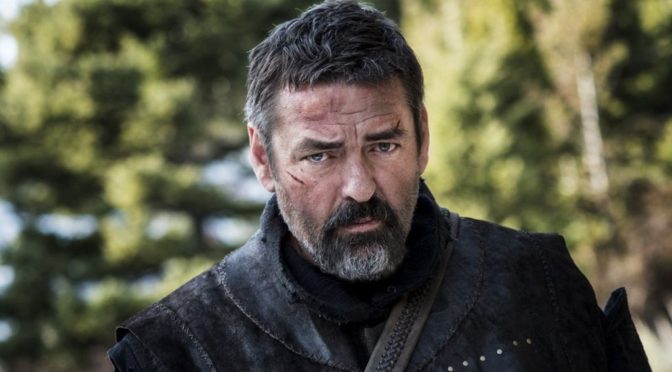 The stories of Scotland’s wars of independence in the 13th and 14th centuries and turbulent history have proven a successful source for modern cinema. Robert The Bruce, hot on the heels of OUTLAW KING following the same regal subject, sees Angus Macfadyen reprise the role of Scotland’s war king he filled in BRAVEHEART. Although the film has an intriguingly intimate setup, it is caught between two approaches and doesn’t fully satisfy either.
The stories of Scotland’s wars of independence in the 13th and 14th centuries and turbulent history have proven a successful source for modern cinema. Robert The Bruce, hot on the heels of OUTLAW KING following the same regal subject, sees Angus Macfadyen reprise the role of Scotland’s war king he filled in BRAVEHEART. Although the film has an intriguingly intimate setup, it is caught between two approaches and doesn’t fully satisfy either.
Ironically, given the history of Macfadyen in the role and the marketing as a pseudo-sequel, the story structure and filmmaking style has less of a BRAVEHEART influence than OUTLAW KING. The story centres on a crofting family living just outside the nearby village. Morag (Anna Hutchison) is the widow of a man who died fighting wars for King Robert, with her home shared by able young archer Iver (Talitha Bateman), trainee blacksmith Carney (Brandon Lessard), and her young son Scott (Gabriel Bateman), the last of whom harbours a grudge over his father’s death for Robert’s cause. Robert, injured and lacking support, is nursed back to health by the family as a band of soldiers loyal to his enemies, led by Morag’s brother-in-law, close in on him and the bounty put upon him.
“The small-scale focus on the family and their history with Robert’s battles is a refreshing approach for a story supposedly centred on historical nobility. The huge-scale army battles of other tales of Scottish history are not to be found here…”
The small-scale focus on the family and their history with Robert’s battles is a refreshing approach for a story supposedly centred on historical nobility. The huge-scale army battles of other tales of Scottish history are not to be found here – ‘battles’ in Robert The Bruce are more like small and skilful skirmishes. There is less glorification of the violence of war, and indeed the film takes the time to question the cost of freedom. Macfadyen’s Bruce is not single-minded in his purpose. He experiences doubt and, indeed, sends his army home in his opening scene. His rehabilitation at the hands of the family is as much about reconciling his personal and national quest with the cost he must then bear – the lives lost in his name – as it is about his wounds.
In this respect, the film tries to get inside Robert the Bruce’s head a little. We see the resignation on his face as he sends his men home and we spend time with him in a cave for the famous tale of the spider that wouldn’t give up spinning a web. We also experience his dreams of victory and of what he thought Scotland and himself could be.
Although these segments are executed well, and Macfadyen does an excellent job as a stoic and pensive Bruce, it seems at odds with the other part of the story focused on the people of 14th-century Scotland. The film opens on Morag regaling her children with a very biased version of Robert The Bruce’s 1306 altercation with John Comyn (a cameo from Jared Harris). The film then immediately jumps to the real Bruce, before settling down with the family as the lead cast. However, the moments designed to characterise Bruce’s internal state intrude on this second strand illustrating his meaning to the people.
“Although these segments are executed well, and Macfadyen does an excellent job as a stoic and pensive Bruce, it seems at odds with the other part of the story focused on the people of 14th-century Scotland.”
The family focus is the more unique route if it had been executed well. As it happens, though, Macfadyen’s portrayal is the more compelling and, therefore, the more conventional regal focus may well have served the film better. Morag is reduced to little more than a damsel-in-distress as the film progresses, and young Scott’s increasingly whiny dialogue succumbs to repetitiveness. The non-native accents of the supporting cast are also extremely wonky (as much as anything in the much-reviled accent work in BRAVEHEART), and the performances not quite up to Macfadyen’s level.
The film is largely shot in Montana, and director Richard Gray deserves credit for managing to blend that with shots of genuine Scottish landscapes. Although those who can identify Montana, Glen Coe and Skye will get a bit of geographical whiplash, the spectacle not found in battles is delivered well in the vistas.
In the end, ROBERT THE BRUCE finds itself caught between two stools – portraying the king’s internal thoughts versus his profile as an inspirational folklore figure. Each saps impact from the other, sadly, but the central performance is well-measured. The story also gathers pace, delivering a rousing end to an intimate tale with a different flavour to most historical war epics.

